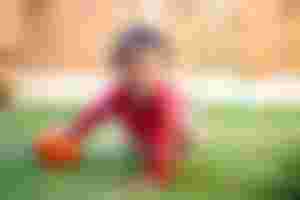Child Development Stages
Children undergo gradual changes in terms of physical, speech, intellectual and cognitive development to adulthood. Certain changes occur in certain ages of life. Known as a development milestone, these changes can help you find out if your child is progressing at the right pace. Failure to reach these milestones can indicate a development disorder or genetic conditions.
Growth and development not only involve physical changes that occur from childhood to adulthood, but also some changes in emotions, personality, behavior, thinking and speech that children develop as well as understanding and interacting with the world around them. Skills like taking the first step or smiling for the first time are called development milestones.
Newborn
During the first month of life, newborn babies react automatically to external stimuli. In other words, a newborn baby will turn his head towards your hand when you hit him on the cheek or when you hold him in his hand, hold his finger. An infant can see nearby things, recognize specific smell, smile or cry to indicate need, and shake his head on the other hand. Symptoms of developmental disabilities may appear in newborn infants, such as spina bifida, genetic disorders and fetal alcohol syndrome.
Infants
Children develop new skills rapidly in the first year of life. In three to six months, an infant can control the movement of his head and put his hands together. By the age of six to nine months, a child can sit down without support, growl and answer his name. Between nine and twelve months, a child can pick up things, crawl and even stand by the prop. Infants may have symptoms of slow growth down syndrome and other developmental disabilities.
Toddlers
During the second year, little children wander about more, and become aware of themselves and the environment around them. Their desire to find new objects and people is also growing. During this stage, small children will show more freedom. Start showing deviant attitude; Recognize yourself in pictures or mirrors; And imitate the behavior of others, especially adults and older children. Young children should also be able to recognize the names of familiar people and objects, make simple sentences and sentences and follow simple instructions and instructions.

Preschool
Between the ages of three and five, children improve their motor skills. They can throw a ball overhand, jump and hop, stand on one foot for ten seconds or more, prepare themselves, and pull a person with features Symptoms of developmental disabilities such as cerebral palsy may appear during this stage of development.

School
By the age of 5, most children are ready to start learning in school setting. During early few years, children are focused on learning the basics. In the third tier, attention becomes more complex. Reading capability enhances more about content as compared to identifying letters and words. The ability to focus is important for success in both school and home places. A 6-year-old should be able to concentrate on a task for at least 15 minutes. By the age of 9, the child should be able to concentrate for about an hour. School-age children often have smooth and strong motor skills. However, their harmony (especially the eye's hand), endurance, balance, and physical abilities vary. Excellent motor skills can also vary widely. These skills can affect a child's ability to write, dress appropriately, and perform certain tasks, such as making a bed or making utensils.
Thanks

Lead image source: Unsplash



Hi, great piece! At what age can you identify ADHD in a child? Let's say at eight or nine, your kid still isn't concentrating for extended periods of time, is this a signal?